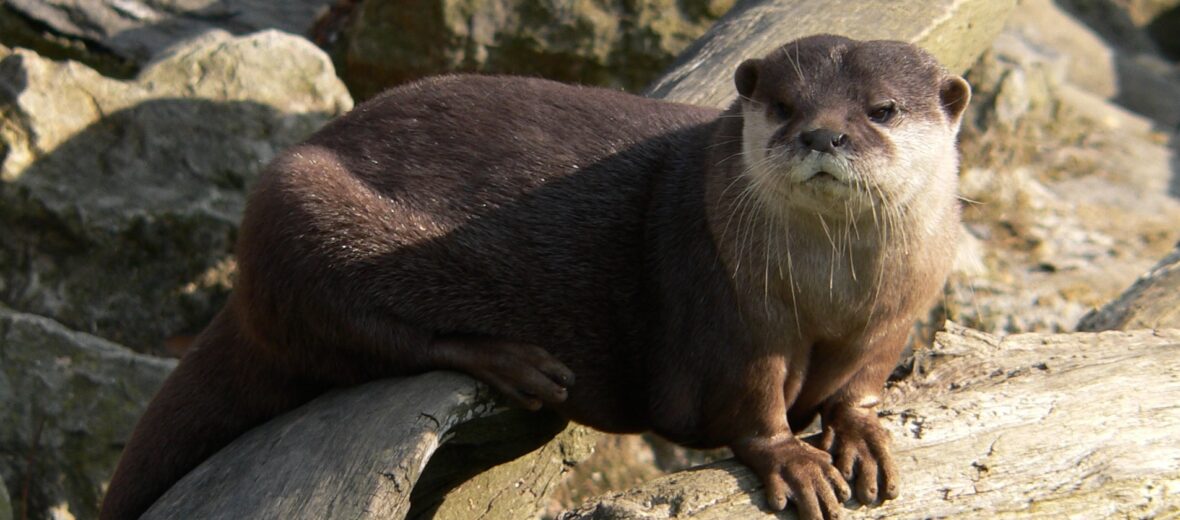
The African clawless otter is renown for its amazing, luxurious fur coat. Like all otters, they are cute and can be very playful. These critters are the second largest known freshwater otter species, after the giant river otter. They can be found in sub-Saharan Africa. African clawless otters like streams, lakes, rivers, and estuaries in savannas as well as lowland forests and even marine habitats. They are hunted for their fur and for bush meat, their population is decreasing and these cute critters are sadly listed as Near Threatened by the IUCN.
First the Stats…
Scientific name: Aonyx capensis
Weight: Up to 43 lbs.
Length: Up to 2.7 feet, plus up to a 2.2 foot tail
Lifespan: Up to 12 years
Now on to the Facts!
1.) Their front feet have long fingers, lacking in claws. Their back feet are webbed to aid in swimming.
2.) African clawless otters are both nocturnal (active at night) and crepuscular (active during dawn and dusk).
3.) Typically solitary, these otters can sometimes be found in groups (called a romp, family, raft, bevy, or pod) consisting of up to 4 – 6, when food is plentiful.
4.) During the hot days, they will sleep in burrows and dens.
5.) When diving for food, they can hold their breath for up to 50 seconds.
But wait, there’s more on the African clawless otter!
6.) Being a very clean animal, they will immediately clean themselves after eating.
7.) They prey on frogs, insects, worms, fish, and crustaceans. Subsequently, they have also been documented eating mollusks, dragonfly larvae, shrews, reptiles, coots, ducks, geese, swans, and other small birds.
Did you know…?
They possess the largest brain to body ratio of any other South African carnivore. This is demonstrated by their dexterity and cleverness.
8.) Crocodiles, pythons, and fish eagles prey on clawless otters.
9.) These otters communicate via grunts, moans, huffs, whistles, mews, squeals, and growls. They also use high-pitched screams to warn the others of predators.
10.) Females birth 1 – 5 pups and she rears them herself, without the help of dad.
But wait, there’s still more on the African clawless otter!
11.) Pups are weened in up to 60 days. They are then taught the skills needed to hunt for their own food. After about 1 year they venture off on their own.
12.) African clawless otters dry themselves by rolling in grass and rubbing against rocks, soil, and mud. They also bask in the sun.
13.) Their highly sensitive whiskers aid them in finding food in the water and mud by detecting the subtle movements of their prey.
14.) Territories are typically marked using a pair of anal glands which secrete a scent individual to each otter.
Now a Short African Clawless Otter Video!
Also, check out the Critter Science YouTube channel. Videos added frequently!
Want to suggest a critter for me to write about? Let me know here.



